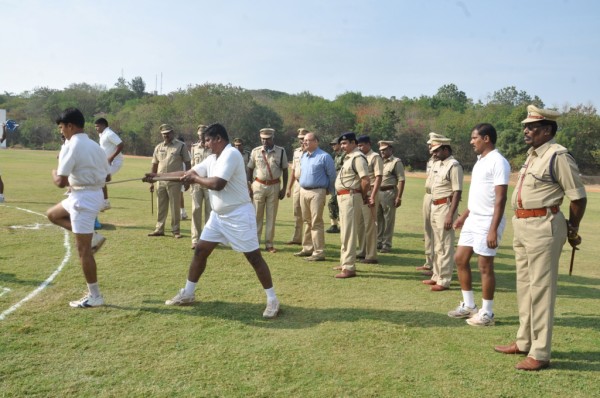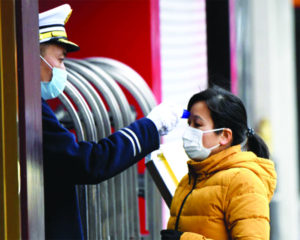POLICE ACADEMY LESSONS
Dr K K Paul |
Undoubtedly, internal security along with law and order are integral to our domestic affairs. But sometimes, their handling by various State police forces leaves much to be desired. Several pictures of police handling of the students in the recent anti-Citizenship Amendment Act (CAA) agitation have not only stained the uniform but also the reputation of the police as a well-trained unit. Reports of women protesting at night in the open, being forcibly deprived of their blankets by policemen, hardly give them any credit. Senior officers were in a denial mode, even as the death toll in firings continued to rise — which appeared to be quite disproportionate to the level of protest, besides, usage of a particular phraseology — all point towards unprofessional conduct. Similarly, the alleged police action inside the library of a university and inaction at another university remain inexplicable.
In the context of the agitation against CAA-NRC-NPR, section 144 of the Code of Criminal procedure and its prohibitory powers with the executive have been much in the news. In fact, this law is a legacy of the pre-independence days. There is a history behind this provision, which goes back to the administration of one of the Princely States, way back in the 1860s. When the Code of Criminal Procedure was being finalised before its publication in 1898, the utility of this law was recognised and it was incorporated as section 144. In the Code, the colonial masters had used the provisions of this law as unbridled executive power over the freedom fighters. After the Britishers left, the Government of India has retained the Code as inherited, along with Section 144. The difference is that after independence, in the Constitution of India, in the chapter on fundamental rights, we have Article 19, which protects the rights of an individual for freedom of speech and expression along with the right to assemble peacefully and without arms, besides other similar right
Immediately after the promulgation of the Constitution in 1950, there arose a need to balance the provisions of Article 19. At that time, the Constituent Assembly had converted itself into a provisional Parliament as the General Elections for the first Lok Sabha were still quite far in the future. Also, at that time there was no Rajya Sabha. On the question of amending the Constitution, it was accepted that the provisional Parliament was fully empowered for amending the Constitution. The need for the 1st Amendment in 1951 by the provisional Parliament had arisen because the right to freedom of speech and expression guaranteed by Article 19(1)(a) was interpreted to be so liberal that “it would not render a person culpable even if he directly incited violence and abused his freedom.” In the background is the case of Romesh Thappar (1950), where a view was taken by the Supreme Court that local breaches of public order were no grounds for restricting the freedom of speech. Later, this was revised after Dr Ram Manohar Lohia’s case (1966), where it was held that an activity which affects “law and order” may not necessarily affect “public order” and an activity prejudicial to “public order” may not necessarily affect “security of the State.” At the same time, an act which merely affects the security of others may not constitute a breach of “public order”.
Over the years, there have been several celebrated cases where the applicability of Section 144 has been adjudicated at various levels. An order under 144 CrPC restricts the fundamental rights of the citizen and can adversely affect the interest of parties but is subject to judicial review. It has been held that the order must be in writing, stating the reasons for the imposition of restrictions. In Dr Praveen Bhai Togadia’s case, the Supreme Court had taken the view that “it would interfere only if the order was patently illegal or without jurisdiction or with ulterior motive and on extraneous consideration of political victimisation by those in power. Normally, interference should be the exception and not the rule.”
In Baba Ramdev’s case, at Ramlila Maidan (June 2011), the Supreme Court had observed certain contradictions in the affidavits of Union Home Secretary and the Police Commissioner. It was also mentioned that most of the gathering was asleep around 1.30 am and as such could not have posed any imminent threat. The justification for use of force at that hour of the night was also found inadequate. The impact of Section 144 is remedial and of a preventive nature, which must adhere to the test of proportionality. Further, freedom of expression being integral to democracy, the Supreme Court has held that in case those, who hold elected offices, felt that it was their duty to criticise any law promulgated as unconstitutional and against public interest and discuss that in public, it was protected by Article 19(1) (a) of the Constitution. Laying down the basic conditions for use of Section 144, it has been held that disturbances of public tranquillity, riots and affray lead to the subversion of public order and they need to be prevented in time. At the same time nuisances dangerous to human life, health and safety have to be abated and prevented, keeping in mind always that orders have to be in writing and are justiciable.
Even if on paper, adequate justification for the promulgation of 144 CrPC exists, the core of the problem lies at the use of force while dispersing an unlawful assembly. One of the centralities of police training throughout the country is minimal use of force. In case its use becomes essential, then it has to be appropriately moderated and calibrated. A certain extent of sensitivity while facing a crowd of women and children, or students, needs to be observed. Unfortunately, at times, in the heat of the moment and in a developing situation, one loses patience and all the “mantras” learnt during training and refresher courses are lost sight of.
The situation can, however, be rectified by separation of law and order from investigation and having dedicated police personnel to handle such situations. The police forces, while dispersing the crowds or unlawful assemblies, have to bear in mind that their charter is limited to restoration of normalcy in the area by use of force or otherwise. Becoming violent and trying to teach the crowd a lesson by unbridled use of force should not even be thought of. To maintain a degree of restraint in spite of provocations requires very tough mental training, which may be possible only if there are specialised units for handling such situations. This takes us back to the separation of forces dealing with enforcement of law and order from crime-related police functions.
(The writer is a former Governor and a Senior Advisor at the Pranab Mukherjee Foundation)





